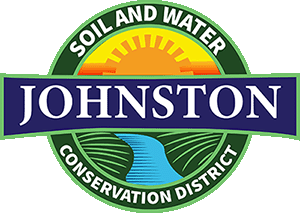
Soil and Water Conservation
Johnston County, North Carolina

Johnston County, North Carolina
Wetlands occur in every state in the nation. They vary in size, shape, and type because of differing climate, vegetation, soils and hydrologic conditions. More than half of America's original wetlands have been drained, filled, altered or destroyed. With increased awareness of ecological processes, the value of wetlands and their overall environmental importance have been recognized. Here are some of the ways that wetlands benefit the environment.
Coastal wetlands provide habitat for spawning and nursery areas for fish and shellfish. Most of the fish and shellfish we eat grow in the wetlands along the Atlantic and Gulf Coasts. Wetlands support a multi-billion dollar per year commercial and recreational fishing industry.
A variety of bird-life including ducks, geese, red winged blackbirds and a large number of songbirds feed, nest and raise their young in inland wetlands. Wading birds, such as herons and egrets, along with hawks, osprey and kingfishers almost exclusively feed in wetlands. Migrating birds utilize wetlands for feeding and as stop-over points to rest. Endangered species such as whooping cranes, bald eagles, wood storks and peregrine falcons all have one thing in common. They are all either located in or dependent on wetlands for their livelihood.
Wetlands store flood water that overflows stream banks and surface water that collects in depressed areas. By doing so, wetlands help protect adjacent and downstream property from flood damage. In riparian areas, trees and other wetland vegetation help slow the speed of floodwater. This action, combined with water storage, can lower flood heights, thus decreasing property damage.
One of the most important functions of wetlands is their ability to help maintain and improve the water quality in our lakes, rivers and streams. Due to their position, mainly between uplands and deep water, wetlands can intercept surface water runoff from land before it reaches open water. Wetlands act as a natural filter, slowing water velocity and thus trapping the pollutants that flow through them. Not only do they catch silts and sediments, but also the pesticides and nutrients that might be attached to these particles.
Wetlands add topographic expression, shoreline complexity, vegetative patterns and wildlife to the landscape. They provide open space and beauty for urban and non-urban areas. Wetlands provide opportunity for fishing, canoeing, hiking, bird watching and sightseeing.
For more information on wetland benefits, contact your local soil and water conservation district of the Conservation Technology Information Center, 1220 Potter Drive, Room 170, West Lafayette, IN 47906-1383.
(Information provided by: Soil and Water Conservation)
Page last updated: July 22, 2022